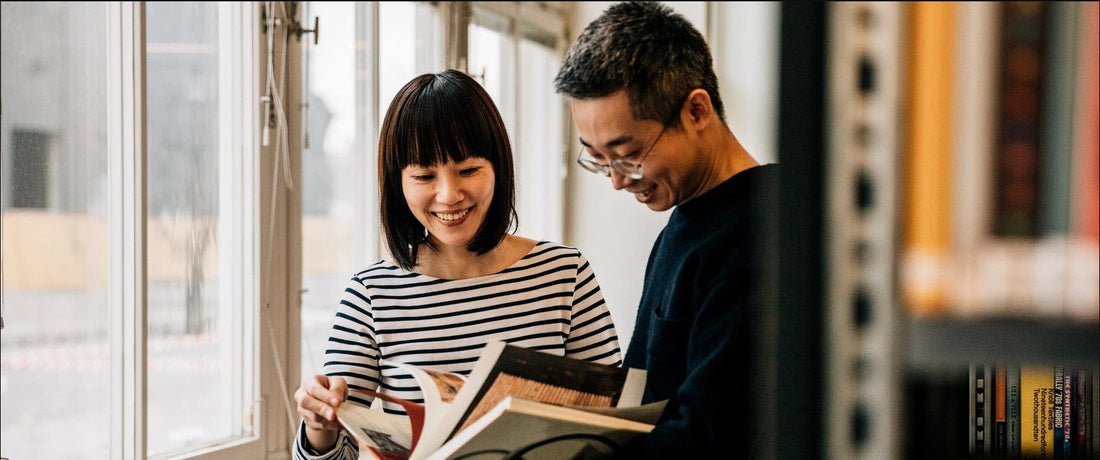We hope our designs are recognised for their sophisticated simplicity combined with functional elegance and that people will use our designs as practical, elegant objects that are a graceful accompaniment to life.

Partners in life as well as design, Hung-Ming Chen and Chen-Yen Wei relocated from their native Taiwan to Sweden in 2006, where Hung-Ming studied design at Konstfack in Stockholm. Their adventure turned out to be more permanent than first planned, and the couple have since settled in the Swedish capital where they have established Afteroom, their award-winning design studio, which marries Hung-Ming’s tech-savvy background as an industrial designer working with 3D software with Chen-Yen’s intuitive and creative approach to aesthetics.
When did you first become interested in design?
Hung-Ming: “My high school major was electrical engineering, but it didn’t take me too long to realise that I wasn’t cut out for it and quickly needed to find another profession before it was too late. Luckily, I discovered industrial design.” Chen-Yen: “I was a business college student with no passion for the subject, but really enjoyed fashion. After graduating, I took a sabbatical. During that time, I realised that being a designer was the hidden dream I’d been wishing for.”

Which aspects of your background and upbringing have shaped your design principles and philosophy?
Hung- Ming: “I grew up in an industrial area where my parents ran a small factory. When I was little, I was fascinated by how things were made so I guess that environment influenced me a lot.”
Chen-Yen: “As a child I often travelled with my family, which I believe is a really natural way to open a child's eyes to the world. Although I grew up in a crowded city, my parents tried their best to put us in contact with nature. Since then, I’ve had an appreciation of beauty. I think my creative influences mostly come from nature and companionship with my parents.”

How would you describe your design aesthetic?
Elegant, thoughtful simplicity.
Tell us a bit about your design process.
Hung-Ming: “We start by discussing ideas, and I sketch them out and make 3D models. Chen-Yen takes charge of the overarching appearance, proportion and colours and selects which projects we bring to life. I’ve worked as an industrial and interior designer for such a long time and know how to operate CAD software and navigate the mass production process.
However, I easily get blinded, so Chen-Yen takes on the responsibility for the aesthetics.”

How long does it take to design a product?
Once we’ve got ideas, we’d start to sketch them out and make 3D models. If a design is viable, we’ll make a full-scale prototype to try it out in real life. The whole process usually takes more than a year.
Where do you get your ideas from?
We visit the Konstfack library quite often. There are lots of different kinds of books we use for reference; not design books per se. Sometimes a great idea can come from a picture or a painting. Our daughter also influences our work. Since having her, we’ve sadly come to realise that we won’t be around forever. But if we do our job as designers well, she’ll see and experience our creations long after we’re gone.
In a way, it feels like we’ll still be with her. Being parents has given us so much inspiration and makes us consider the human relationship between time and objects. Both of us love timeless things. The notion of placing memories, emotions and thoughtful simplicity in an object is really romantic.

What is Afteroom’s rasion d’etre?
The main idea behind Afteroom is to be an advocate of the traces of time. All our designs share the spirit of this thought. We simply want to create objects people won’t get tired of and will want to keep for generations to come.
What is the most challenging aspect of your practice?
Compromise.
What makes it all worthwhile?
Working at our own independent design studio allows us to research the subjects we’re most interested. Often, if we dig deep enough, we can always find a new direction to try something unexpected.

What do you want people to take away from your designs?
We hope our designs are recognised for their sophisticated simplicity combined with functional elegance and that people will use our designs as practical, elegant objects that are a graceful accompaniment to life.
